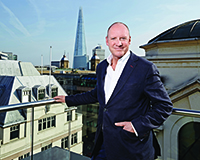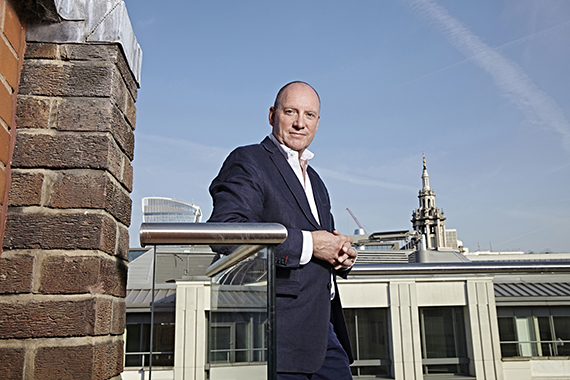Earlier this year an Asian investor bought a site on Leadenhall Street that could one day house a skyscraper. Unusually, for a deal involving a multi-billion pound Hong Kong conglomerate and the potential for a new high-rise office scheme, it was largely unremarked upon.
Property headlines have been dominated for the last few years by wave after wave of Asian investors snapping up the capital’s prime development opportunities. But perhaps on this occasion, the deal escaped the headlines because of the party which fronted it.
London & Oriental has been quietly getting on with the business of buying buildings for Asian clients in the UK since the mid-1990s.
Jointly run in London by David Royce and Mark Cannell, the group has a portfolio under management that now approaches £500m. Most of the company’s schemes have been 25,000 sq ft to 60,000 sq ft refurbishment projects for private Asian investors.
But on the eve of the group’s 20th anniversary, London & Oriental is gearing up to take on by far its two largest schemes to date. In September this year the company won planning permission for the mixed-use redevelopment of 63-65 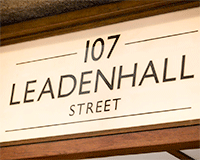 Buckingham Gate and 1-2 Brewer’s Green, SW1, the Victoria headquarters of the Labour party. And in May this year it paid RBS £60m for Bankside House at 107 Leadenhall Street, EC3. While any wholesale redevelopment is a long way off, a skyscraper could be on the cards.
Buckingham Gate and 1-2 Brewer’s Green, SW1, the Victoria headquarters of the Labour party. And in May this year it paid RBS £60m for Bankside House at 107 Leadenhall Street, EC3. While any wholesale redevelopment is a long way off, a skyscraper could be on the cards.
Ahead of the work getting under way, Cannell sat down at the group’s recently completed 36 Queen Street, EC4, development, to give a long overdue first interview.
Cannell began his career as a City agent before joining Jones Lang Wootton in 1987, where he worked with the Japanese desk. Royce ran JLW’s investment team in Hong Kong at the time and when the pair met in the late 80s they decided to exploit a gap in the market for a private asset management firm to service Asian investors in London.
“If you had a Hong Kong company that had a well-established network and reputation locally, that reputation didn’t necessarily travel readily to the UK at the time,” explains Cannell. “But if people here are dealing with people who are seen as local, it actually helps that whole chain get oiled.”
L&O formally launched following Cannell’s departure from JLW in 1995, starting life with a couple of long-standing clients whom Royce knew from Hong Kong, including the chairman of the Great Eagle Company, Dr KS Lo, owner of the Langham Hotel Group.
It initially invested in asset management opportunities outside London, but after four years of building and then selling a regional portfolio, the group secured its first London project: 28 Austin Friars.
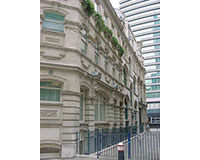 “Austin Friars was a template for what we went on to do subsequently,” says Cannell. “We bought a vacant building and undertook a Cat A refurbishment, leased it out and then that was subsequently sold about four years later.”
“Austin Friars was a template for what we went on to do subsequently,” says Cannell. “We bought a vacant building and undertook a Cat A refurbishment, leased it out and then that was subsequently sold about four years later.”
A string of similar projects followed at 100 Fenchurch Street, EC3, 128 Southwark Street, SE1 and 30 St George Street and 2 Mill Street, both W1, and the portfolio gradually grew.
But the strategy really came into its own around a decade later when the bottom fell out of the world’s financial markets and competition for London sites suddenly thinned.
“One of the things that has appealed to us over the last five years or so has been the relative lack of available finance, both on construction and buying vacant buildings,” says Cannell. “Because one of the things that the equity from Hong Kong brings to the table is an ability to raise money on what I think are probably more competitive terms than those currently available locally.”
The favourable market conditions helped the company to secure what have become some of its most successful projects to date.
Acting on behalf of Hong Kong based Lai Sun Group – the same investor backing 107 Leadenhall Street – L&O bought 36 Queen Street in July 2011 for £16.8m, reflecting a 10% yield. Designed by Sir Terry Farrell in 1984 and with around 12 months of income from Bank of Ireland, the building had “come to the end of its useful life”, says Cannell.
A Rolfe Judd-designed refurbishment and partial redevelopment into 47,093 sq ft of grade-A office space was granted consent in March 2012 and work completed in September 2013. Having originally estimated rental values would be around £50-£52.50 per sq ft, L&O has achieved £63 per sq ft on the top floors and £54-£57.50 per sq ft on the middle floors of the building. The first floor remains available.
A similarly healthy return has recently been achieved at the company’s refurbishment of 35 King Street, another smaller City scheme which also radically outperformed its ERVs.
The eye-catching return has given the company’s investors’ confidence to push on with larger schemes, and it is unlikely those returns will be a one-off (see box).
At Bankside House the potential could be even greater than Buckingham Gate. L&O outbid dozens of interested parties to secure the art-deco building in May.
While it is let until 2025, several long-term investors were interested in the opportunity the site presented for building at height. Next door to the Gherkin, it is one of the few remaining blocks in the heart of the cluster that has not been redeveloped.
“We’re just letting that asset bed down for the time being,” says Cannell. “In between now and (the building becoming vacant) we’ll be looking at all of the options and undertaking a number of feasibility studies to see what we’re going to do.”
The £60m purchase price seemed punchy at the time but Cannell believes there is short-term growth potential.
“We were able to buy in at around £550 per sq ft off rents which average between £30 and £35 per sq ft. In essence this is a fairly cheap option for any tenant wanting to be close to Lloyd’s of London and we felt that there were opportunities to increase the cashflow as a result of that and particularly as a result of the natural displacement that’s going to take place when Leadenhall Triangle and the Scalpel get built.”
So at 53 years old and nine years away from getting vacant possession on one of the “last developable sites in the City cluster”, will Cannell hang around to pursue a major redevelopment?
“Well, that’s what we’re hoping for.”
And is a skyscraper on the cards?
“It’s a nice dream. We’re pretty confident you can build at height on that site.”
Opening the gate
At Buckingham Gate, L&O could be sitting on a goldmine.
Royce bought the building from the First International Property Trust of Australia on behalf of a private family client in 1994. The tower building has been the headquarters of Rolls Royce since 1978 when the building was completed.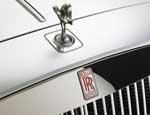
Rolls Royce’s offices occupy the lower nine floors of the building, with 42 serviced apartments above.
The luxury car maker’s lease expires this year and full vacant possession can be achieved in January 2016, opening up the potential for a wholesale redevelopment.
The consented redevelopment scheme, designed by Fletcher Priest, proposes converting an additional three floors of the tower building to flats, bringing the total number to 65.
The podium building, which currently houses the Labour party headquarters, will be demolished and replaced by a new self-contained 45,000 sq ft office building over seven floors.
The final element of the scheme includes a separate annex building of around 10,000 sq ft, which will be redeveloped for retail use with offices above.
The net lettable office area of the tower will be reduced to around 30,000 sq ft as the sixth to ninth floors are converted to residential use.
Partial residential conversion will create a substantial premium on the building’s value with flats at LandSec’s nearby Wellington House and Buckingham Gate schemes selling for £2,000 to £2,500 per sq ft.
But Cannell says he won’t be cashing in just yet. L&O’s client plans to hold the building for the long-term and retain the flats for private rental.







